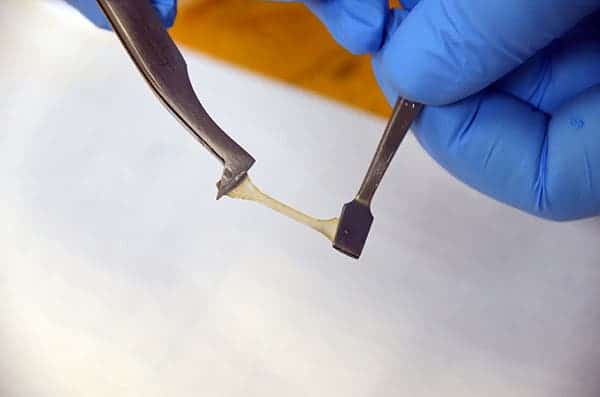When your plastic device breaks, there’s basically nothing else to do but shrug, try to glue it then go on with your life. But wouldn’t it be useful if the plastic itself could fix itself? Let me illustrate with the latest creation to come off the Pennsylvania State University lab: a bioplastic containing a novel mix of proteins derived from squid sucker ring teeth that can fuse back together when water is added. Once its ‘healed’, the bulk bioplastic return to its previous compression and tensile strength, so its not fragile.
Prof. Melik Demirel had been curious about the self-healing abilities of squid sucker teeth for some time. Upon investigation, he found that although the exact composition of the teeth varied species to species, there were some key proteins common to all squids which were responsible for this ability.
Extracting the proteins from squids proved counter-productive since the yield was very low. It also meant a lot of animals had to be processed. So, a solution was to harvest these proteins from genetically modified bacteria, a sort of biological factories. The proteins weren’t alone, however, but joined as a copolymer. Basically, an additional portion made up of strands of amino acids connected by hydrogen bonds was added to the polymer.
When the researchers cut a sample of the polymer in half then added a bit of water and applied pressure, the material fused back together. Stress tests showed that the bulk material was just as strong or bendable as prior to the suture.
“If one of the fiber-optic cables under the ocean breaks, the only way to fix it is to replace it,” said Demirel. “With this material, it would be possible to heal the cable and go on with operation, saving time and money.
“Maybe someday we could apply this approach to healing of wounds or other applications,” he said. “It would be interesting in the long run to see if we could promote wound healing this way so that is where I’m going to focus now.”










